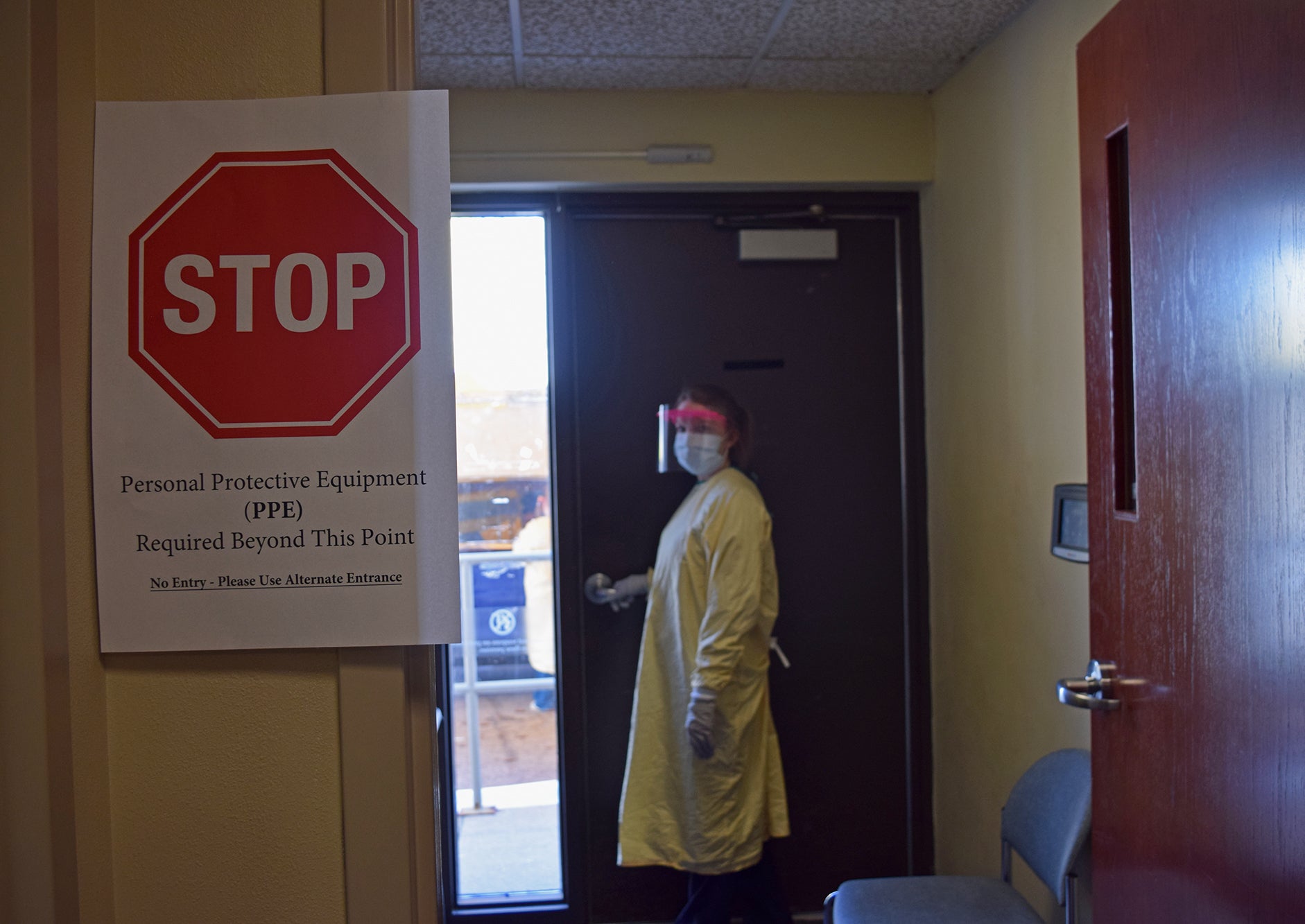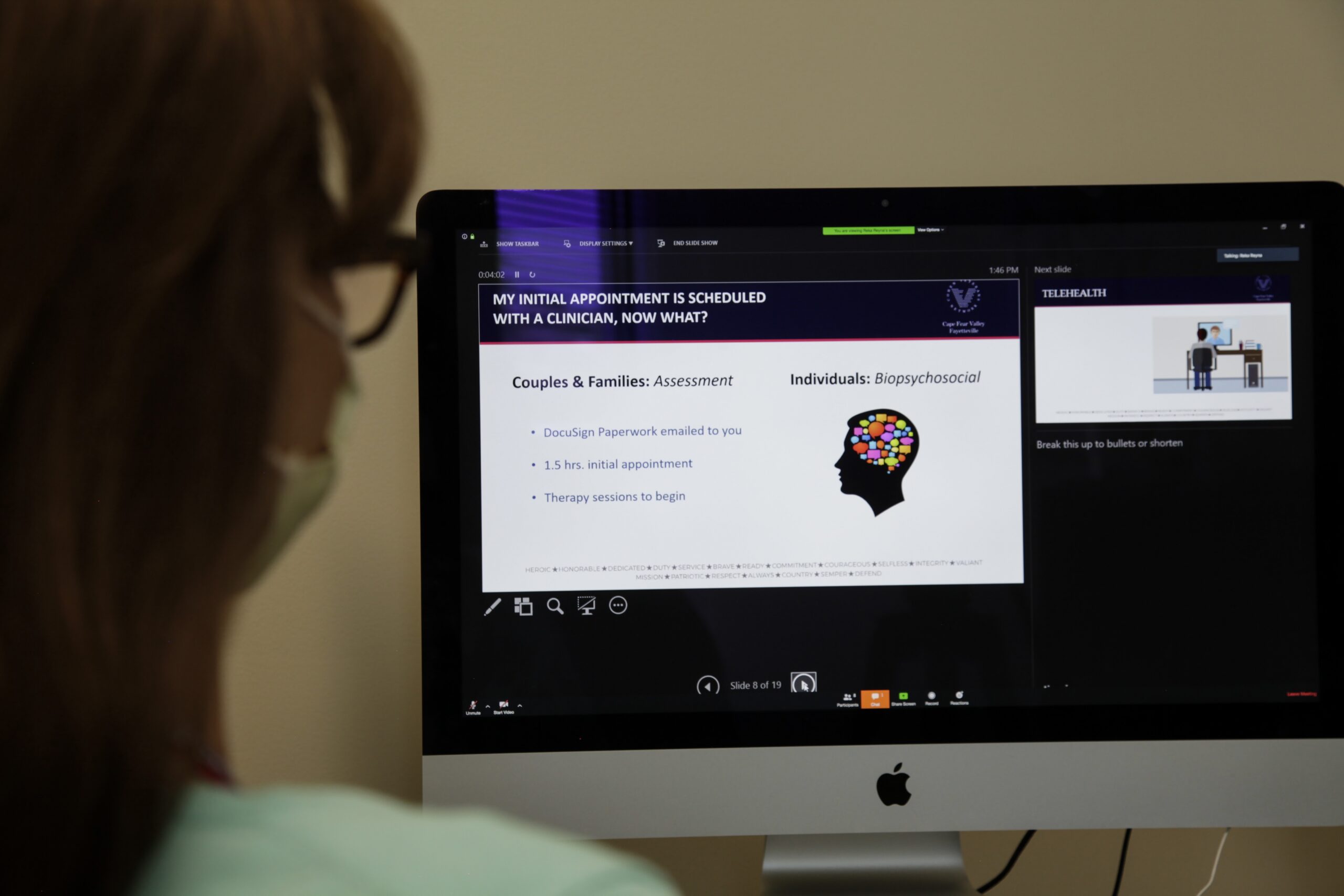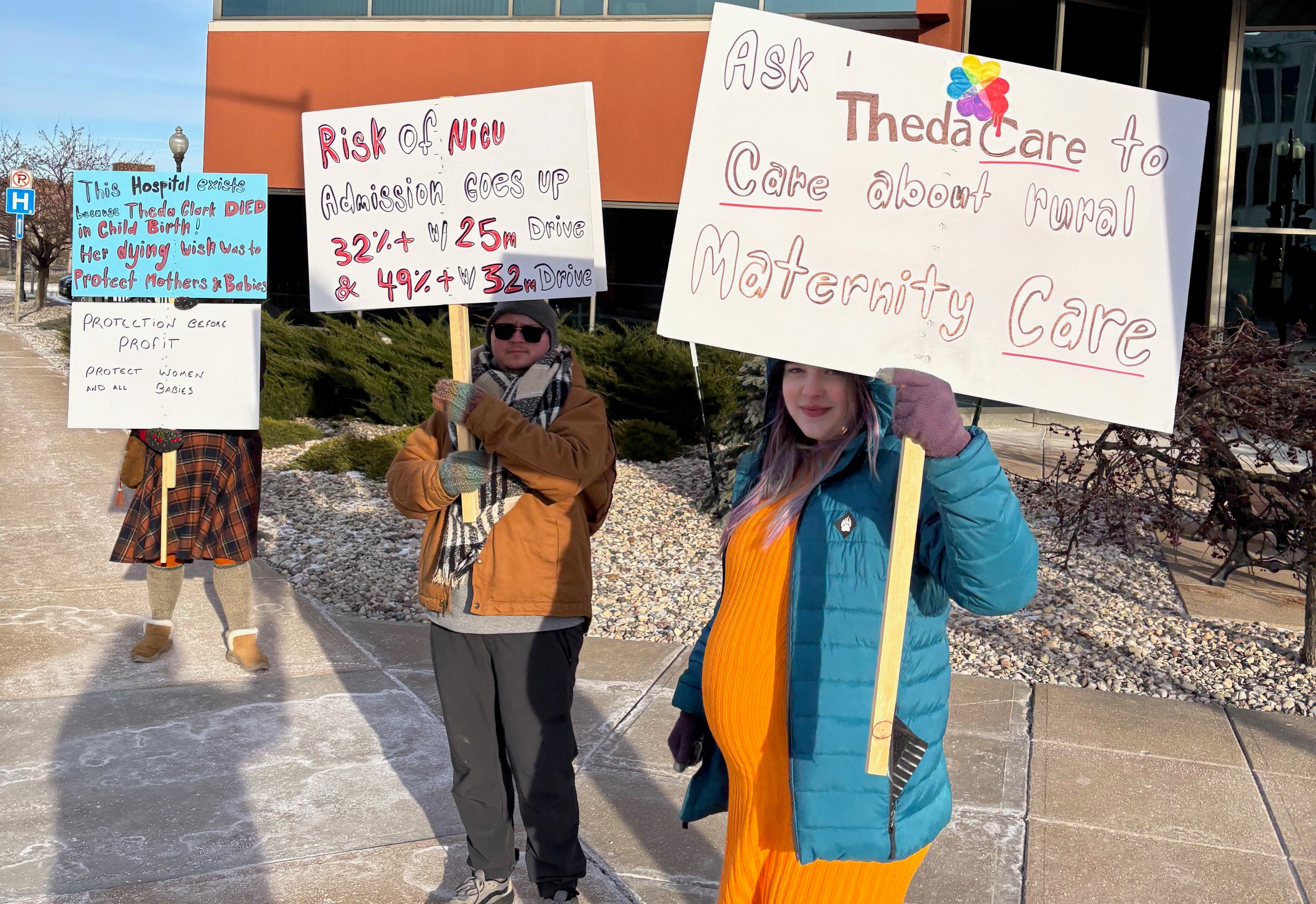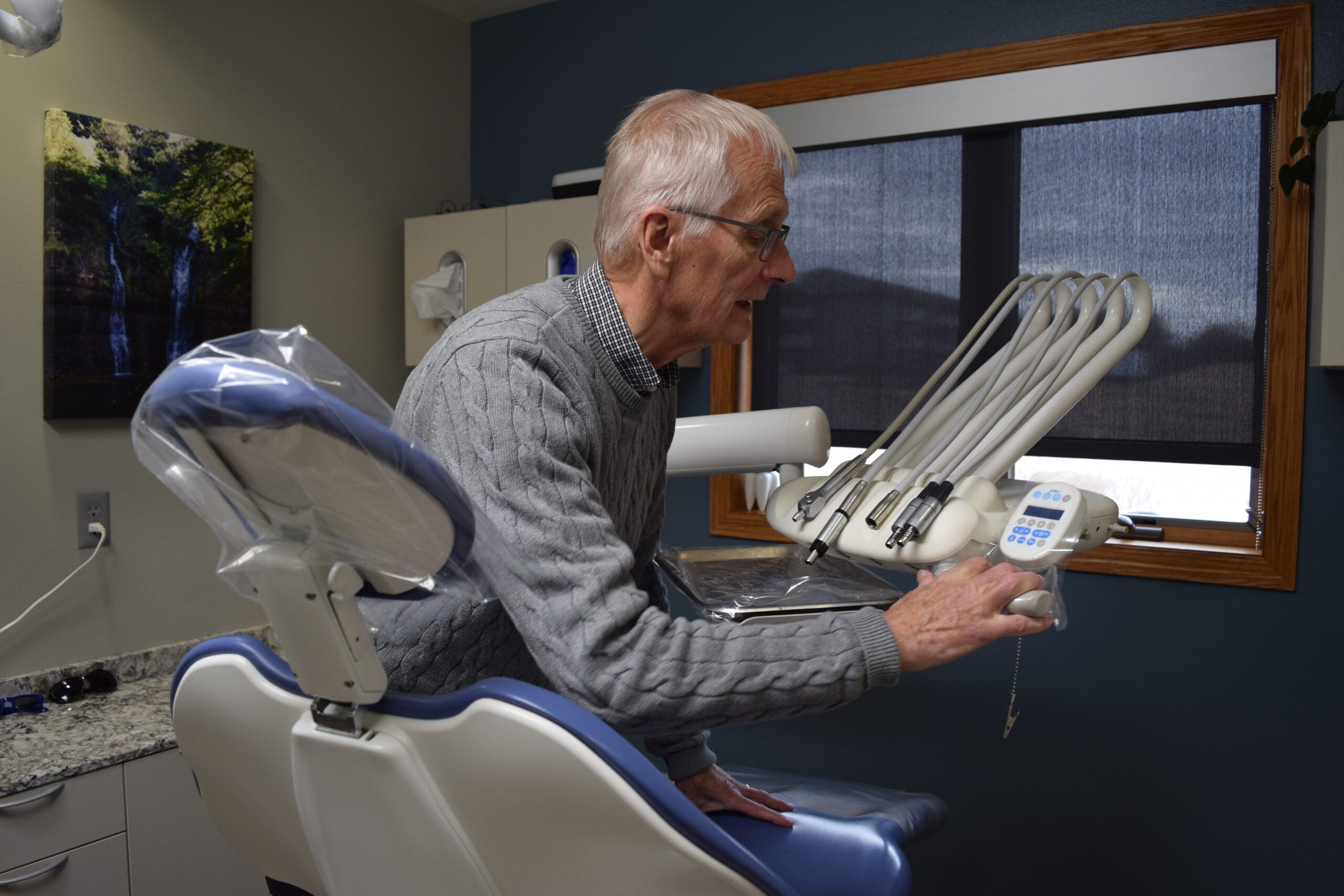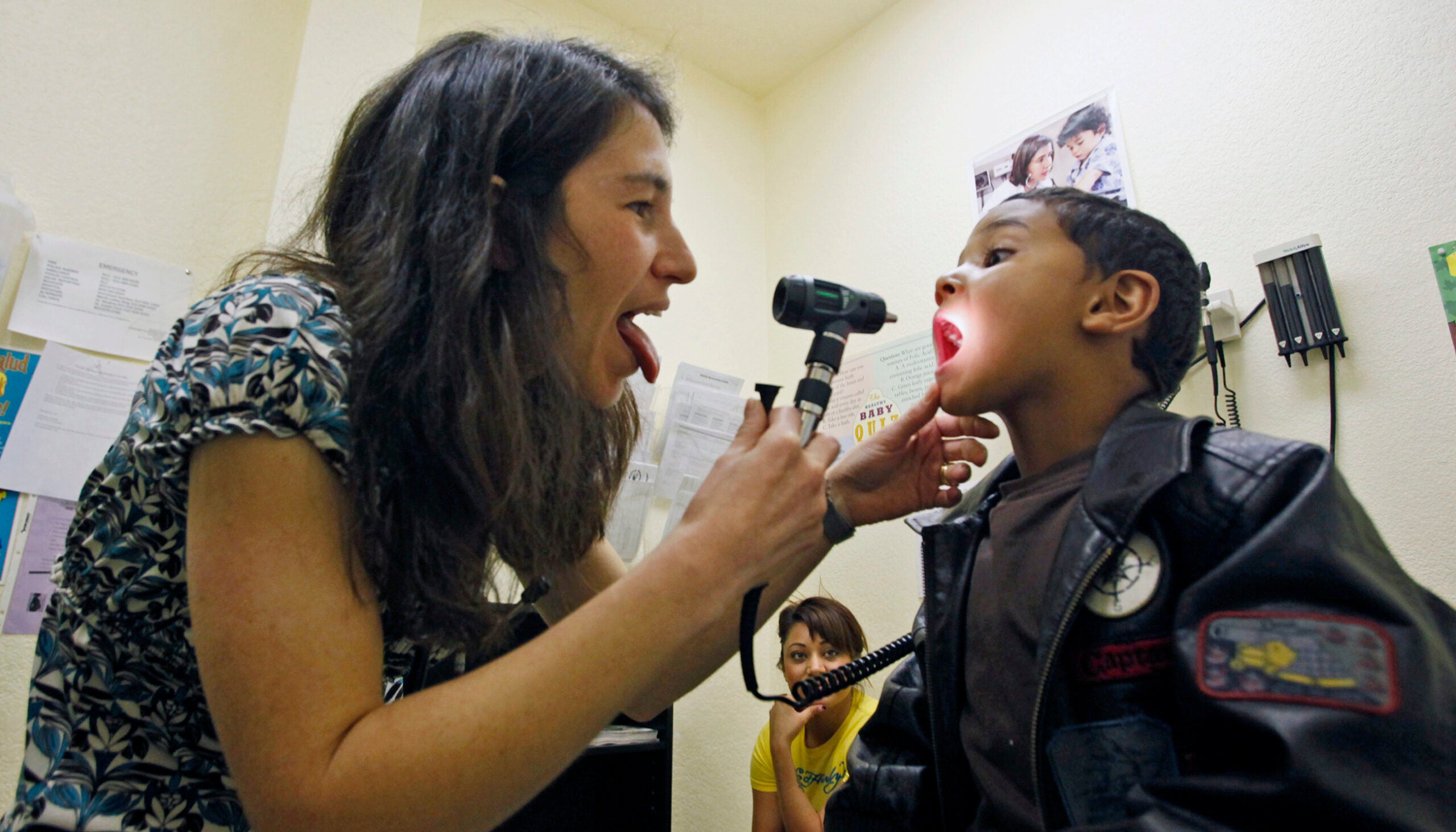When paramedic Amanda Bates gets a potential COVID-19 call, she dons full isolation protection. Double masks, gloves, booties and safety goggles make them look like a biohazard team out of a movie, she said.
The growing spread of COVID-19 in Wisconsin has first responders taking every precaution from spreading the virus further, said Bates, a firefighter and education director for the Wisconsin EMS Association in Racine County.
“In the county that I work for, there have been positive COVID-19 cases, but we don’t know if those came through our area, if we were the transporting agency for them,” she said.
Stay informed on the latest news
Sign up for WPR’s email newsletter.
The exposure is concerning, Bates said. Her transition from work to home has been turned upside down — protection is paramount.
When her shift is done, she immediately washes her hands. Then, she bags up her uniform, takes a shower, puts the towel in the bag and drives home with the bag in her trunk. Once home, she takes the bag out of her trunk and sprays down her car with Lysol.
“Then I am basically disrobing in my garage and my husband hands me another set of clothes before I make a run for it,” Bates said.
As for the equipment she and other first responders need to keep herself, the public and her family safe, it’s like gold.
Report after report has outlined that the United States is low on virtually all protective equipment — like face shields, respiratory N95 face masks, hospital gowns — medical workers need across the country.
At one point, her team was about three weeks away from running out of supplies for a normal call volume, Bates said. Then, they received a shipment of PPE (personal protective equipment) from the state Department of Health Services last week.
But going forward, medical experts are nervous.
In rural areas, the concerns about supply are more pronounced.
John Eich, director of the Wisconsin Office of Rural Health, said while rural hospitals are holding up well now, challenges will come if the situation gets worse.
“And certainly what we’re being told is that it could get a lot worse,” he said.
While both urban and rural hospitals alike are struggling to get the supplies they need, Eich said rural hospitals worry they are at the end of the line.
“These are desperate times for people,” he said. “So while the supplies are coming and people are donating, and they do have some to begin with, the lack of it is really challenging and makes it much more difficult as we think about this virus increasing.”
Rural areas are also experiencing the virus on a different timeline.
Eich likened the current situation to a tsunami, where everything gets very quiet and the water drains away, but you can feel that something is coming. But at the same time, it can feel like a strange limbo — many people in rural areas haven’t directly experienced the virus yet, but they are experiencing the same disruptions to daily life as those in areas more affected by the virus.
“The child care disruptions, schools, jobs have happened immediately, but the virus feels even further away,” he said. “That brings both a lot of worry and uncertainty. But also, this sense of a disconnect.”
And while hospitals prepare for the likely increase in COVID-19 patients, elective procedures and surgeries are being postponed — a huge hit to the hospitals’ revenue, Eich said.
“To stop all but the most critical procedures means that their revenue has been drastically hit,” he said. “Which is a challenge for them in trying to make sure that they are paying their staff, that they have the revenue to buy the materials that they need or the supplies they need.”
For Bates, she’s optimistic about her department’s ability to manage the outbreak. But she worries about other more rural areas.
“Some of rural Wisconsin, you have a lot of providers that are older — 50s, 60s, they work for volunteer agencies there,” she said. “They might be hurt the most with staffing and lack of PPE. Those are the services that I worry about.”
Fewer physicians practice in rural areas. According to the National Rural Health Association, 20 percent of the U.S. population lives in rural areas, but only 11 percent of physicians practice there.
“There are large areas of the state where they already in normal times do not have enough physicians, physician assistants, nurse practitioners, etc. to meet the needs,” Eich said. “And then you add in something like this, it could be a recipe for some very difficult times.”
Since 9/11, there has been a strong push for preparedness in the medical field, Eich said. But much of that preparedness has come from experience in emergencies or disasters, such as mass shooters or extreme natural events.
What makes COVID-19 different is the sheer level of uncertainty and unknowns, he said.
“We certainly are prepared for this,” he said. “Folks are trained, they’re professionals, they’re doing great work. But the question is, are we fully prepared? And the answer is ‘No.’”
Wisconsin Public Radio, © Copyright 2025, Board of Regents of the University of Wisconsin System and Wisconsin Educational Communications Board.

